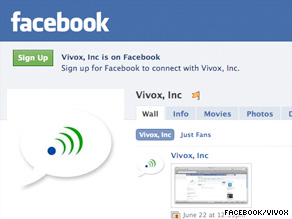ARTICLE HIGHLIGHTS:
- The agency side rewards talent, the client side rewards safety
- Client-side entrenched mediocrity feeds on itself
- The way most people rise up on the client side is by being adverse to risk
I have been a vocal critic of the way most agencies are structured. However, many of the structural problems agencies face are a direct result of clients. Agencies have struggled for years to change the agency/client dynamic. They have actively experimented with ways to bring the client what they need, while still producing work that serves a higher purpose.
Chiat/Day and Crispin Porter + Bogusky have been changing the agency landscape structure for years by innovating, experimenting, tinkering, and attempting to produce the best work in a flawed environment. Unfortunately, most agencies are not that bold, and many of those ideas and structural changes have failed. This failure isn't because they weren't innovative, but like the nimbleness of an oil tanker, the clients' inability to change -- or the glacial pace at which they do change -- has forced many agencies to survive in a structure that produces neither the best work nor the most profit.
Such is the issue with service-based industries; they are only as good as who they service. In the end, it is the clients' fault. Here's why. There is a fundamental, structural, endemic issue that clients have that creates a system that prohibits change, how employees are rewarded, and how they are valued.
It is a system that serves to entrench mediocrity.
What most ad agencies do not realize -- because they routinely promote talent over personality and politics -- is that the way most people rise up on the client side is by being adverse to risk. Now, some clients reading this will protest, but I have watched and personally experienced this fact. The client is the equivalent of a scared 10-year-old boy who is worried that no one likes him. Don't dare make fun of that child, don't pick on that child, and whatever you do, do not question that child. Debate must happen in a "child safe" environment organized by the company.
For the client, from a myopic perspective, this keeps the company safe, and in a world of investors and public companies, safety and predictability rule over nimbleness and experimentation. However, there has been a profound societal shift over the last 10 years. The financial markets didn't understand that shift and it nearly destroyed them, and the old rules of organizational structure -- valid for decades -- have broken down.
I would posit -- and a number of economists would support it -- that the internet was one of the key fundamental shifts that changed the corporate model. True globalization was enabled by technology, accelerated by it, and created the system whereby those old structural models could be put to their fullest test. The result? It shattered them.
Look at the financial industry. The strongest people still standing are the technologists, the algorithm makers, the electronic automated trade creators, with multimillion dollar salaries. The game now is technology.
The company and client structure, which served the previous model so well for close to a century, no longer applies. But like that oil tanker, how do you turn it around? Very, very slowly. In fact, most companies would benefit from a whole-scale dismantling and reassembling.
I was amazingly dismayed that we did not allow General Motors to perish under its own weight. It is a model that cannot survive in the new structure. I would have been giddy to see GM implode completely. The amount of innovation that its collapse would have spawned would have ushered in a new era of transportation. But alas, we did not have the fortitude to do it.
In the end, there are five fundamental employee archetypes, and the interplay among them dictates the structure and function of a company -- and the way that agencies are forced to interact with clients. Org charts just provide a framework for structure, but it's the way that any given corporate culture responds to the various archetypes that dictates how a company really works. All five archetypes are needed for a company to be dynamic and grow, but unfortunately, two of these major archetypes are eviscerated by most corporate structures on the client side -- to their detriment.
- The Leader
- The Acquiescer
- The Follower
- The Saboteur
- The Control Problem




